LUCIGENIN
Synonym(s):9,9′-Bis(N-methylacridinium nitrate);Lucigenin
- CAS NO.:2315-97-1
- Empirical Formula: C28H22N4O6
- Molecular Weight: 510.5
- MDL number: MFCD00011925
- EINECS: 219-023-4
- SAFETY DATA SHEET (SDS)
- Update Date: 2025-12-15 16:23:17
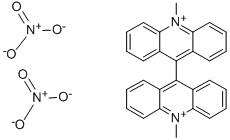
What is LUCIGENIN?
Description
Lucigenin is a chemiluminescent probe used to detect superoxide production and the presence of chloride. It can be used to detect superoxide production by enzymatic and cellular sources. It is a sensitive method that has been applied to the monitoring of superoxide production from xanthine oxidase, microsomal NADPH cytochrome reductase, and NADPH oxidases of phagocytes, endothelial cells, fibroblasts, and smooth muscle cells of blood vessel walls. However, it produces similar chemiluminescence signals in isolated aortic and cardiac tissues from wild-type and Nox1-Nox2-Nox4 triple knockout mice, suggesting that it is not selective for NADPH-based ROS production. It also reacts with hydrogen peroxide without generating free radical intermediates and has been used to detect lipid hydroperoxide in oils. Lucigenin is also used as a fluorescent chloride-sensitive indicator, with its fluorescence being quenched by chloride (ex/em = 455/505 nm, respectively). Lucigenin fluorescence is insensitive to phosphate, sulfate, and nitrate.
Chemical properties
Dark yellow powder
The Uses of LUCIGENIN
Lucigenine, is used as chemiluminescence. It exhibits a bluish-green fluorescence. Dyes and metabolites.
The Uses of LUCIGENIN
Chemiluminescent probe for the detection of peroxides in biological systems.
What are the applications of Application
Lucigenin is a chemiluminescent superoxide probe
Mechanism of action
In the case of lucigenin it is first reduced to a cation radical. Then it reacts in its univalently reduced form with ROS to produce dioxetane, which breaks down to generate photons. These probes cannot measure the individual free radicals but measure global ROS levels in the sample. Luminescence signals are expressed in relative light units (RLU), a direct measure of free radicals produced.
Properties of LUCIGENIN
| Melting point: | 250°C |
| solubility | acetic acid: soluble10mg/mL |
| form | powder |
| color | Yellow powder with orange to brown cast |
| λmax | 455nm |
| BRN | 3901768 |
| Biological Applications | Chloride indicator; diagnosis of hemostatic disorders; detecting bacteria,nucleicacids,proteins,pathogens; identifying respiratory infections; generating and detecting reactive oxygen species; chemiluminescent indicator |
| InChI | InChI=1S/C28H22N2.2NO3/c1-29-23-15-7-3-11-19(23)27(20-12-4-8-16-24(20)29)28-21-13-5-9-17-25(21)30(2)26-18-10-6-14-22(26)28;2*2-1(3)4/h3-18H,1-2H3;;/q+2;2*-1 |
Safety information for LUCIGENIN
| Signal word | Warning |
| Pictogram(s) |
 Flame Over Circle Oxidizers GHS03  Exclamation Mark Irritant GHS07 |
| GHS Hazard Statements |
H272:Oxidising liquids;Oxidising solids H315:Skin corrosion/irritation H319:Serious eye damage/eye irritation |
| Precautionary Statement Codes |
P210:Keep away from heat/sparks/open flames/hot surfaces. — No smoking. P220:Keep/Store away from clothing/…/combustible materials. P221:Take any precaution to avoid mixing with combustibles/… P264:Wash hands thoroughly after handling. P264:Wash skin thouroughly after handling. P280:Wear protective gloves/protective clothing/eye protection/face protection. P501:Dispose of contents/container to..… |
Computed Descriptors for LUCIGENIN
| InChIKey | KNJDBYZZKAZQNG-UHFFFAOYSA-N |
| SMILES | C1(=C2C=CC=CC2=[N+](C)C2=CC=CC=C12)C1=C2C=CC=CC2=[N+](C)C2=CC=CC=C12.[N+]([O-])([O-])=O.[N+]([O-])([O-])=O |
New Products
4,4-Difluoropiperidine hydrochloride tert-butyl 9-methoxy-3-azaspiro[5.5]undecane-3-carboxylate Indole Methyl Resin N-Isopropylurea N,N-Dicyclohexylcarbodiimide(DCC) MELDRUMS ACID 5-METHYLISOXAZOLE-4-CARBOXYLIC ACID Magnessium Bis glycinate Zinc ascorbate 1-bromo-2-butyne 2-acetamidophenol 9(10H)-anthracenone Erythrosin B, 4-Piperidinopiperidine 2-((4-morpholinophenylamino) (methylthio) methylene) malononitrile 2,4-dihydroxybenzaldehyde 3-(4-morpholinophenylamino)-5-amino-1H-pyrazole-4-carbonitrile Methyl 2-methylquinoline-6-carboxylate 2,6-dichloro-4-nitropyridine 4-Bromo-2-chlorobenzonitrile 2-(benzylamino)acetic acid hydrochloride 4-(tert-Butoxycarbonylamino)but- 2-ynoic acid 3,4-dihydro-2H-benzo[b][1,4]dioxepine 1-Phenyl-1-cycloprppanecarboxylicacidRelated products of tetrahydrofuran
![3,7-DIHYDRO-6-[4-[2-[N'-(5-FLUORESCEINYL)THIOUREIDO]ETHOXY]PHENYL]-2-METHYLIMIDAZO[1,2-A]PYRAZIN-3-ONE](https://img.chemicalbook.in/CAS/GIF/133118-06-6.gif)
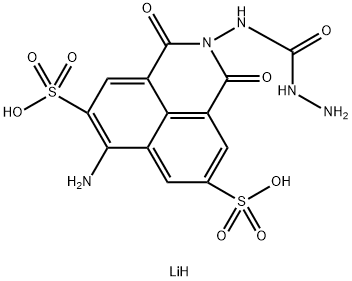
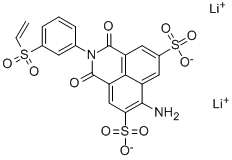
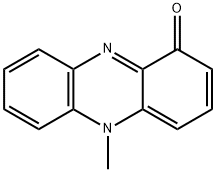

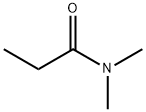
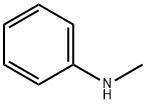
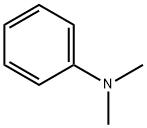
You may like
-
 Lucigenin 95% CAS 2315-97-1View Details
Lucigenin 95% CAS 2315-97-1View Details
2315-97-1 -
 N,N′-Dimethyl-9,9′-biacridinium dinitrate, ≥98% CAS 2315-97-1View Details
N,N′-Dimethyl-9,9′-biacridinium dinitrate, ≥98% CAS 2315-97-1View Details
2315-97-1 -
![10,10'-Dimethyl-9,9'-biacridinium Dinitrate [for Chemiluminescence Research] CAS 2315-97-1](https://img.chemicalbook.in//Content/image/CP5.jpg) 10,10'-Dimethyl-9,9'-biacridinium Dinitrate [for Chemiluminescence Research] CAS 2315-97-1View Details
10,10'-Dimethyl-9,9'-biacridinium Dinitrate [for Chemiluminescence Research] CAS 2315-97-1View Details
2315-97-1 -
 N,N′-Dimethyl-9,9′-biacridinium dinitrate CAS 2315-97-1View Details
N,N′-Dimethyl-9,9′-biacridinium dinitrate CAS 2315-97-1View Details
2315-97-1 -
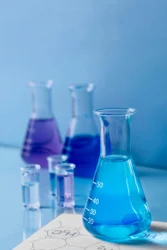 N,N-Dimethyl-9,9-Biacridinium DinitrateView Details
N,N-Dimethyl-9,9-Biacridinium DinitrateView Details
2315-97-1 -
 20677-73-0 (2,2-diethoxyethyl)methylamine 98%View Details
20677-73-0 (2,2-diethoxyethyl)methylamine 98%View Details
20677-73-0 -
 3-(4-(hydroxyamino)-1-oxoisoindolin-2-yl)piperidine-2,6-dione 98%View Details
3-(4-(hydroxyamino)-1-oxoisoindolin-2-yl)piperidine-2,6-dione 98%View Details -
 57381-49-4 2-bromo-4-chlorobenzonitrile 98%View Details
57381-49-4 2-bromo-4-chlorobenzonitrile 98%View Details
57381-49-4
